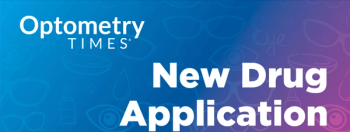
- October digital edition 2022
- Volume 14
- Issue 10
Refractive technologies encompass a rapidly changing landscape
Evolution of vision correction procedures, diagnostics paves way for collaborative care.
Refractive technology is constantly evolving, with new solutions to address patients’ needs. This evolution is not limited to options for correction—it includes methods for more objectively evaluating as well as understanding patient candidacy, needs, and preferences.
Collaborative refractive management over a lifetime
Vision correction is experiencing explosive growth within the eye care space. Glasses, contact lenses, orthokeratology (ortho-k), pharmaceuticals, and refractive surgery provide options for addressing a patient’s refractive needs at any time.
With today’s technologies, effective and safe treatments can address refractive needs at each stage. There are 4 main refractive milestones patients will encounter.
1. Myopia control
Ocular development is well understood among eye care professionals, and normal and abnormal patterns for axial length have been documented. Axial length monitoring is becoming a standard component of the pediatric examination. The goal is to prevent the formation of high myopic refractive error with the associated comorbidities in patients later in life using myopia management strategies. These include optics-based treatments with defocus contact lenses and spectacles, pharmaceutical intervention with atropine, corneal-based treatment with ortho-k, or a combination of these.
Ortho-k provides a vision correction solution without spectacles or contact lenses. This goes beyond slowing myopia development; by improving confidence and participation in sports and other activities, it can provide social and psychological benefits. Effective myopia management with ortho-k also gives patients a preview of the lifestyle and ease that refractive surgery may offer once they reach ocular maturity.
2. Surgical refractive correction
Patients reach the milestone of ocular maturity in their late teens to mid-20s, with behavioral, genetic, and environmental influences affecting the timing in each individual. Ocular maturity brings several options for permanent solutions for vision correction, including excimer laser treatments—such as laser-assisted in-situ keratomileusis (LASIK), photorefractive keratectomy (PRK), femtosecond laser treatment with small-incision lenticule extraction (SMILE), and phakic intraocular lenses (IOLs).
Recent advances have made these options safer, more accurate, and easier to use. The inconvenience of foggy spectacles due to wearing masks has led to significant growth in these procedures during the past 2 years.
3. Presbyopia treatments
Middle age brings on another milestone—presbyopia—which might be more aptly explained to a patient as a dysfunctional lens syndrome. At this stage in life, the need for near vision improvement takes precedence.
Strategies for glasses-free vision correction include monovision—also known as blended vision—which can be achieved via corneal-based procedures, as well as LASIK, PRK, SMILE, and refractive lens exchange (RLE).
Alternatively, both distance and near vision can be achieved with diffractive and nondiffractive IOLs during RLE. Finally, there is an emerging role for topical pharmaceuticals, currently with a transitory effect, and many new treatments on the horizon.
4. Refractive-cataract surgery
The last stage is the development of refractive pathology in the form of cataracts. Surgery is performed to remove crystalline lens pathology and IOLs are used to deliver a refractive outcome.
Modern cataract surgery is truly refractive surgery. Modern IOLs provide distance to near vision, and modern toric lenses are very effective in treating astigmatism.
With this wide variety of technologies available, it is essential to select the right option for the right patient at the right time. Collaboration between ophthalmologists and optometrists is essential for comprehensive refractive management and successful patient outcomes.
Advances in corneal imaging
Massive advancements have been made in diagnostics. The evolution from keratometry and refraction to corneal tomography and wavefront aberrometry has been game-changing in selecting the right refractive procedure for each patient. Tomography device software is capable of advanced algorithmic screening to highlight the presence of irregular corneas.
In the context of corneal refractive surgery, the evaluation of in vivo corneal biomechanics has long been the holy grail. Outside of the United States, a Scheimpflug camera–based system has been developed and records ultrahigh-frame-rate videos of corneal deformation while pneumatic forces are exerted on the cornea.1
Objective image analytic software analyzes the video to evaluate corneal strength, providing insights into biomechanical characteristics of the cornea. This information may influence procedure selection.
Biomechanics with tomography provide a highly accurate corneal assessment, which is important because a cornea may have a normal shape but not normal biomechanical strength. With the Scheimpflug camera–based biomechanics system, the data can be integrated with corneal tomography data to provide a single-metric tomographic-biomechanical risk assessment.2
To take it a step further, finite element analysis software is being developed to perform computational modeling.2 Using corneal structure and strength data, the software can simulate corneal refractive procedures and model the resulting changes. This information will guide surgeons in determining the most appropriate procedure for each patient.
Three other technologies being studied are in their infancy for use in clinical practice: Brillouin microscopy, optical coherence tomography elastography, and phase-decorrelation ocular coherence tomography.3 Brillouin microscopy assesses photon shift in a tissue to assess biomechanics.
This technology is noncontact and focal in nature. It can measure an exact point within tissue and can be applied to the cornea or even the crystalline lens. OCT elastography evaluates the biomechanical properties of the cornea under force, which can be applied by various methods.
Again, the use of video and objective image analysis provides metrics of interest. This can be especially useful for assessing depth-specific corneal strength.
Assessment of patient visual needs
To better evaluate patient needs and simulate post-procedure optics, monitored visual evaluation and virtual reality (VR) come into play. In monitored visual evaluation, a small electronic device attaches to a pair of spectacles and tracks the patient’s visual activities, such as time spent in dim illumination or looking at near targets.
These data provide an objective “vision behavior profile” analysis describing how patients use their vision as they go through daily activities, rather than relying on a patient’s subjective report of activities during an exam. This information provides important insights for tailoring refractive treatments to each patient’s lifestyle. Previews of postprocedure vision can be simulated using VR headsets that let patients experience the quality of vision different IOLs may provide.
Corneal-based treatments
The primary goal of vision correction surgery is to provide the desired refractive outcome—or “lower order”—including sphere and cylinder correction. Modern laser systems have become extremely accurate in achieving this goal.
Significant advances have also been made in increasing accuracy of treatments and reducing postsurgical aberrations. Night driving, glare, and other quality-of-vision metrics are also improved after modern laser vision correction, as reported in multiple FDA trials.4,5 This has been achieved with the evolution of excimer lasers to include optimized ablation profiles, aberrometry-guided treatments, topography-guided treatments, and use of corneal tomography to create custom ablation patterns.
Tomography with integrated biometry and aberrometry are being used in Europe to create ray-traced custom ablations and will likely be coming soon to the United States.6 Additionally, artificial intelligence–driven surgical planning software has made great advances in providing automated algorithmic suggestions to improve refractive predictability and track outcomes.7
Despite all the advances in corneal laser-based correction, hyperopia over 4 diopters remains difficult to treat with hyperopic LASIK and PRK and hyperopic SMILE—which is unavailable in the US. Challenges include induced aberrations, limited corneal tissue availability, as well as a tendency for regression due to epithelial remodeling.
A promising new procedure to address this need is lenticule intrastromal keratoplasty (LIKE).8 With LIKE, donor allograft cornea tissue is cut on a femtosecond laser to create a large diameter lenticule to provide hyperopic correction. During the procedure, a femtosecond laser is used to create a large flap, which is retracted like during LASIK. The lenticule is then laid on the stromal bed and the flap on top. Allographic (human corneal) tissue is well tolerated and not associated with the complications experienced with synthetic inlays.
When it comes to corneal-based presbyopia treatment, earlier synthetic inlays were visually successful but experienced complications due to lack of biocompatibility. The corneal allograft inlays for presbyopia overcome this biocompatibility issue by use of sterilized allograft corneal stroma tissue that is cut into 2-mm hyperprolate lenticules.9 Similar to LIKE, the lenticule is placed under a flap created with the femtosecond laser on the stroma bed, and the flap is placed back in position. The result is an increased depth of focus, improving near vision.
Other procedures are being developed to create cornea shape changes without removing corneal tissue. Corneal cross-linking increases corneal biomechanical strength using a photochemical reaction in the anterior stroma, mediated by riboflavin, UV light, and oxygen. By use of focal, patterned UV illumination, treatments for low levels of myopia, hyperopia, and astigmatism are being investigated.10
Another approach under development is laser-induced refractive index change (LIRIC),11 which uses an extremely low-pulse-energy femtosecond laser to produce focal densified collagen, reducing water content and changing corneal refractive index to correct vision.
Intraocular procedures
IOLs are constantly undergoing optical evolutions. With current monofocal, multifocal, trifocal, extended depth-of-focus (EDOF), and other optical combinations, there is an optical profile for nearly any visual need. Another IOL technology provides small aperture optics using a pinhole aperture to extend the EDOF12 and reduce aberration. This may be particularly beneficial to those with irregular corneal astigmatism.
Although refractive predictability with cataract surgery has greatly improved, it can still be challenging in complex eyes, such as those with prior corneal refractive surgery, and extreme axial lengths. The ability to modify the focus of the IOL after it has been implanted would be ideal.
Newer IOL technologies—such as the light-adjusted lens (LAL)—allow for exactly that: postimplantation IOL power adjustments. The LAL’s photoactive material, with the recent addition of a UV absorber to protect from undesired prescription change, can be polymerized with a UV illumination device to change the refractive power.13
A new UV absorber, LIRIC can be used for IOLs as well. LIRIC modifies the refractive index and the optical profiles of IOLs (monofocal to multifocal and vice versa) for postimplantation refractive adjustment. LIRIC can also be used with contact lenses, which may provide accurate visual simulations in the context of preoperative counseling for refractive surgery.
Another advance is in phakic implantable collamer lenses (ICL). Outside of the US, the addition of EDOF optics makes this an attractive option for patients with presbyopia.14
In the US, the FDA recently approved the ICL with a larger optic—and a central fenestration—to allow aqueous flow through the lens, obviating the need for an iridotomy.15,16
With the increasing commonality of onsite surgical suites, these intraocular procedures are increasingly being completed in office.
Patient adherence and medications
Improved postoperative care and patient adherence may be achieved with compounded medications that include steroids, nonsteroidal anti-inflammatory drugs, and antibiotics in a single bottle to decrease the burden. Intracanalicular, intracapsular or intracameral drug delivery systems eliminate reliance on the patient to provide that specific medication.17,18,19
Drug-eluting contact lenses are also in development which may be used for postoperative healing.20 Recently introduced software applications improve patient adherence with drop tracking, text messaging, and patient-reported outcomes.
Presbyopia
New technologies for presbyopia include temporary correction with topical agents. Only 1 is FDA approved,21 with many more in the pipeline.
Most of these agents are based on small-aperture optics via miotic agents to create a larger depth of focus.
There are a few novel molecules seeking to improve accommodation by restoring lens elasticity or slow lens stiffening and prevent progression of presbyopia.
Final thoughts
Vision correction has expanded to include all stages of life, from myopia control in adolescents and vision correction in young adults to presbyopia treatments in middle-aged patients and refractive cataract surgery in seniors.
The rapid evolution of technologies, procedures, and diagnostics for vision
correction provides an exciting opportunity for collaborative care and the development of long-term patient-centered relationships with refractive surgeons.
References
1. Baptista PM, Ambrosio R, Oliveira L, Meneres P, Beirao JM. Corneal biomechanical assessment with ultra-high-speed Scheimpflug imaging during non-contact tonometry: a prospective review. Clin Ophthalmol. 2021;15:1409-1423. doi:10.2147/OPTH.S301179
2. Ferreira-Mendes J, Lopes BT, Faria-Correia F, Salomão MQ, Rodrigues-Barros S, Ambrósio R Jr. Enhanced ectasia detection using corneal tomography and biomechanics. Am J Ophthalmol. 2019;197:7-16. doi: 10.1016/j.ajo.2018.08.054
3. Chong J, Dupps WJ Jr. Corneal biomechanics: measurement and structural correlations. Exp Eye Res. 2021;205:108508. doi: 10.1016/j.exer.2021.108508
4. Cheng SM, Tu RX, Li X, et al. Topography-guided versus wavefront-optimized LASIK for myopia with and without astigmatism: a meta-analysis. J Refract Surg. 2021;37(10):707-714. doi:10.3928/1081597X-20210709-01
5. Schallhorn JM, Seifert S, Schallhorn SC. SMILE, topography-guided LASIK, and wavefront-guided LASIK: Review of clinical outcomes in premarket approval FDA studies. J Refract Surg. 2019 Nov 1;35(11):690-698. doi: 10.3928/1081597X-20190930-02. PMID: 31710370.
6. Kanellopoulos AJ. Initial outcomes with customized myopic LASIK, guided by automated ray tracing optimization: a novel technique. Clin Ophthalmol. 2020;14:3955-3963. doi:10.2147/OPTH.S280560
7. Stulting RD, Lobanoff M, Mann PM II, Wexler S, Stonecipher K, Potvin R. Clinical and refractive outcomes after topography-guided refractive surgery planned using Phorcides surgery planning software. J Cataract Refract Surg. 2022;48(9):1010-1015. doi:10.1097/j.jcrs.0000000000000910
8. Tanriverdi C, Ozpinar A, Haciagaoglu S, Kilic A. Sterile excimer laser shaped allograft corneal inlay for hyperopia: one-year clinical results in 28 eyes. Curr Eye Res. 2021;46(5):630-637. doi:10.1080/02713683.2021.1884728
9. Kılıç A, Tabakcı BN, Özbek M, Muller D, Mrochen M. Excimer laser shaped allograft corneal inlays for presbyopia: initial clinical results of a pilot study. J Clin Exp Ophthalmol. 2019;10. doi:10.4172/2155-9570.1000799
10. Näslund S, Rehnman JB, Fredriksson A, Behndig A. Comparison of two annular photorefractive intrastromal cross-linking protocols in high oxygen for low-grade myopia through 24-month follow-up. Acta Ophthalmol. 2022;100(5):549-558. doi:10.1111/aos.15035
11. Näslund S, Rehnman JB, Fredriksson A, Behndig A. Comparison of two annular photorefractive intrastromal cross-linking protocols in high oxygen for low-grade myopia through 24-month follow-up. Acta Ophthalmol. 2022;100(5):549-558. doi:10.1111/aos.15035
12. Näslund S, Rehnman JB, Fredriksson A, Behndig A. Comparison of two annular photorefractive intrastromal cross-linking protocols in high oxygen for low-grade myopia through 24-month follow-up. Acta Ophthalmol. 2022;100(5):549-558. doi: 10.1111/aos.15035
13. Folden DV, Wong JR. Visual outcomes of an enhanced UV protected light adjustable lens using a novel co-managed, open-access methodology. Clin Ophthalmol. 2022;16:2413-2420. doi:10.2147/OPTH.S378525
14. Packer M, Alfonso JF, Aramberri J, Elies D, Fernandez J, Mertens E. Performance and safety of the extended depth of focus implantable collamer lens (EDOF ICL) in phakic subjects with presbyopia. Clin Ophthalmol. 2020;14:2717-2730. doi: 10.2147/OPTH.S271858
15. Packer M. Evaluation of the EVO/EVO+ Sphere and Toric Visian ICL: six month results from the United States Food and Drug Administration clinical trial. Clin Ophthalmol. 2022;16:1541-1553. doi:10.2147/OPTH.S369467
16. P030016/S035 Trade/Device Name: EVO/EVO+ VISIAN Implantable Collamer Lens (EVO ICL) and EVO/EVO+ VISIAN TORIC Implantable Collamer Lens (EVO TICL). FDA. Accessed September 21, 2022.
https://www.accessdata.fda.gov/cdrh_docs/pdf3/P030016S035A.pdf
17. Bacharach J, McCabe C, Jackson M, et al. First real-world, multicenter, post-marketing, retrospective study of dexamethasone intraocular suspension for inflammation after cataract surgery. Clin Ophthalmol. 2022;16:1783-1794. doi:10.2147/OPTH.S357267
18. McCabe C, Desai P, Nijm L, Osher R, Weinstock R. Real-world experience with intracapsular administration of dexamethasone intraocular suspension 9% for control of postoperative inflammation. Clin Ophthalmol. 2022;16:1985-1992. doi:10.2147/OPTH.S361146
19. Hovanesian JA, Donnenfeld ED. Intracameral dexamethasone 9% vs prednisolone acetate 1% in controlling postoperative pain and inflammation in patients undergoing cataract surgery. J Cataract Refract Surg. 2022;48(8):906-911. doi:10.1097/j.jcrs.0000000000000887
20. Jones L, Hui A, Phan CM, et al.CLEAR - Contact lens technologies of the future. Cont Lens Anterior Eye. 2021;44(2):398-430. doi: 10.1016/j.clae.2021.02.007
21. New drug application 214028. Food and Drug Administration. FDA. Accessed September 21, 2022. https://www.accessdata.fda.gov/drugsatfda_docs/label/2021/214028s000lbl.pdf
Articles in this issue
about 3 years ago
Making artificial tears less artificialabout 3 years ago
Orthokeratology is key to managing pediatric myopiaabout 3 years ago
Agent improves near vision for irregular corneas with pinhole effectabout 3 years ago
Dacryostenosis illustrates the complexity of treating teary eyesabout 3 years ago
Q&A: Exploring telehealth through DigitalOptometricsabout 3 years ago
Current glaucoma treatments bring challengesabout 3 years ago
Case study: Pigment epithelial detachment is observed, managedabout 3 years ago
Debunking common ortho-k mythsNewsletter
Want more insights like this? Subscribe to Optometry Times and get clinical pearls and practice tips delivered straight to your inbox.



















































.png)


